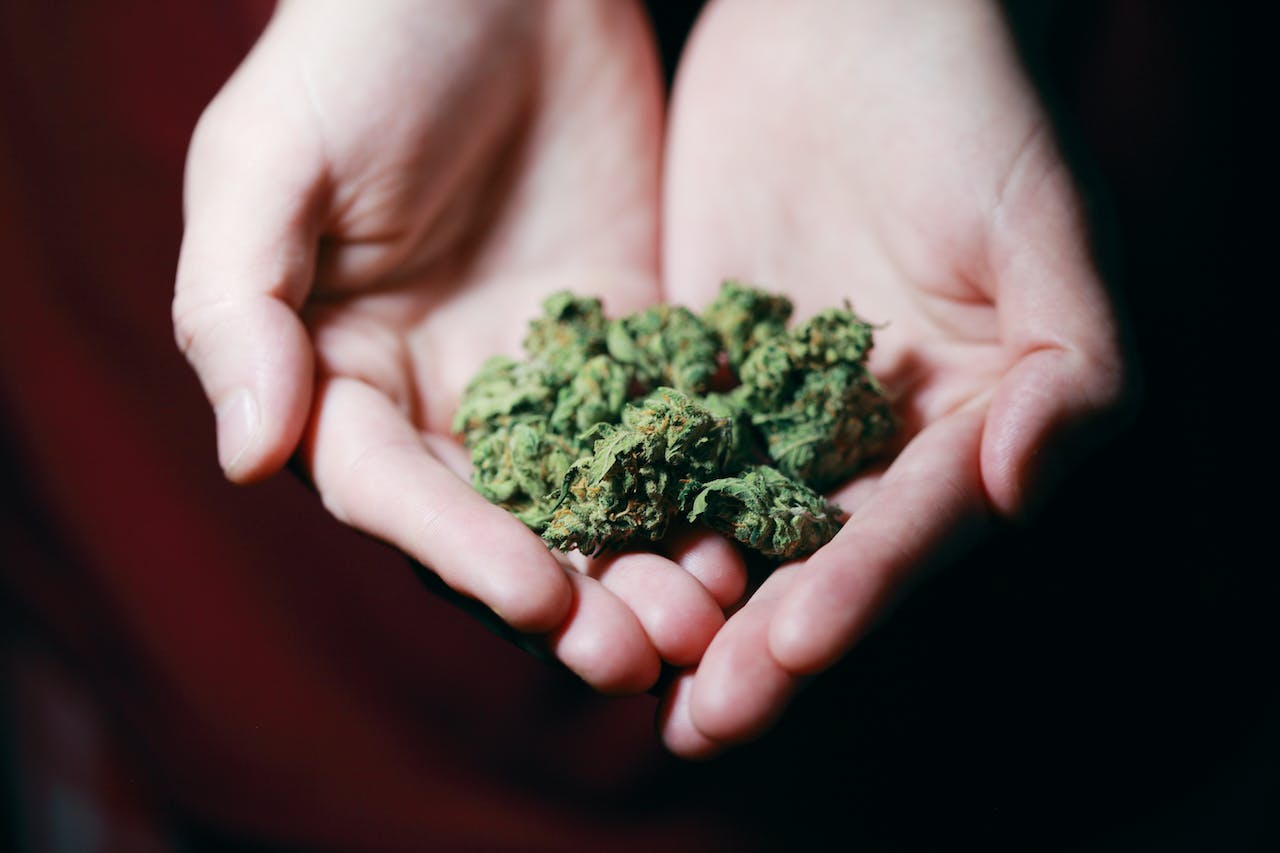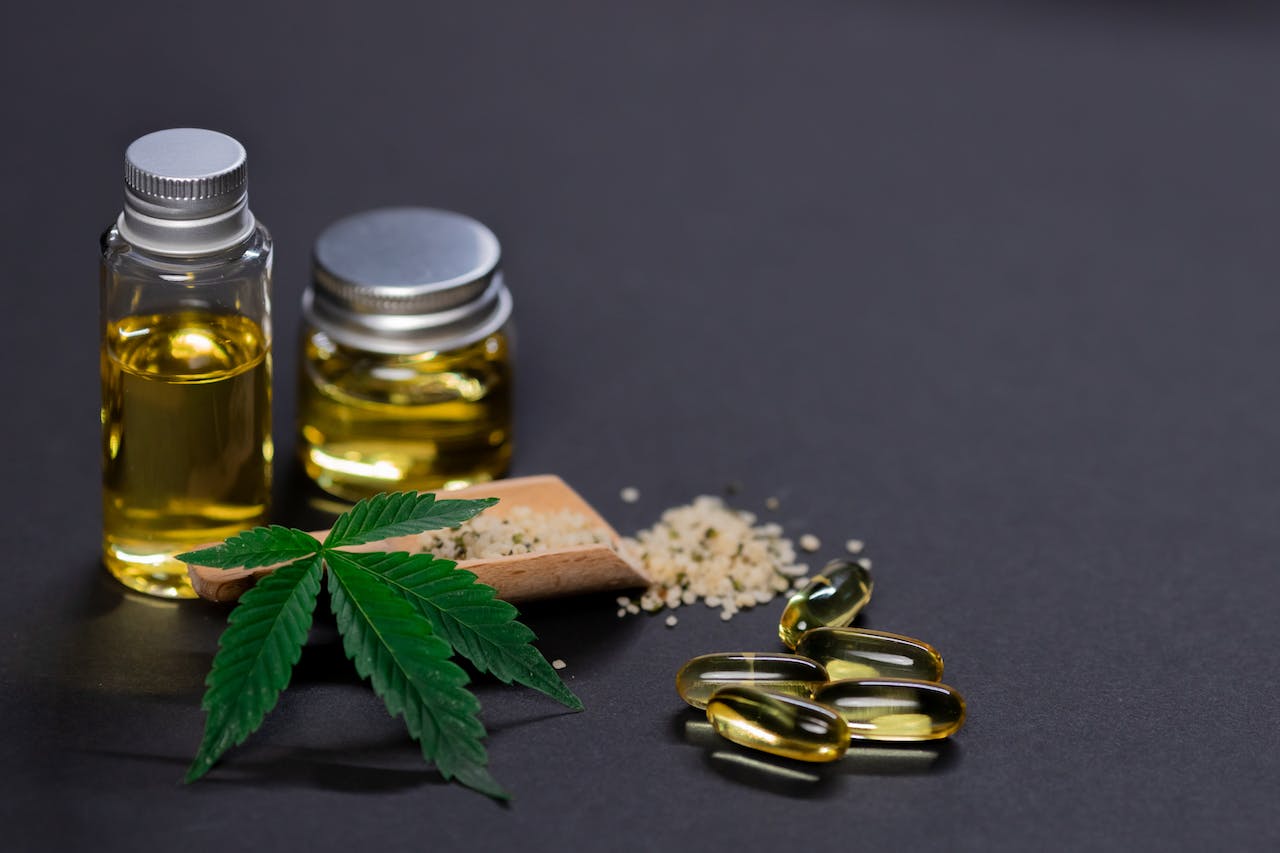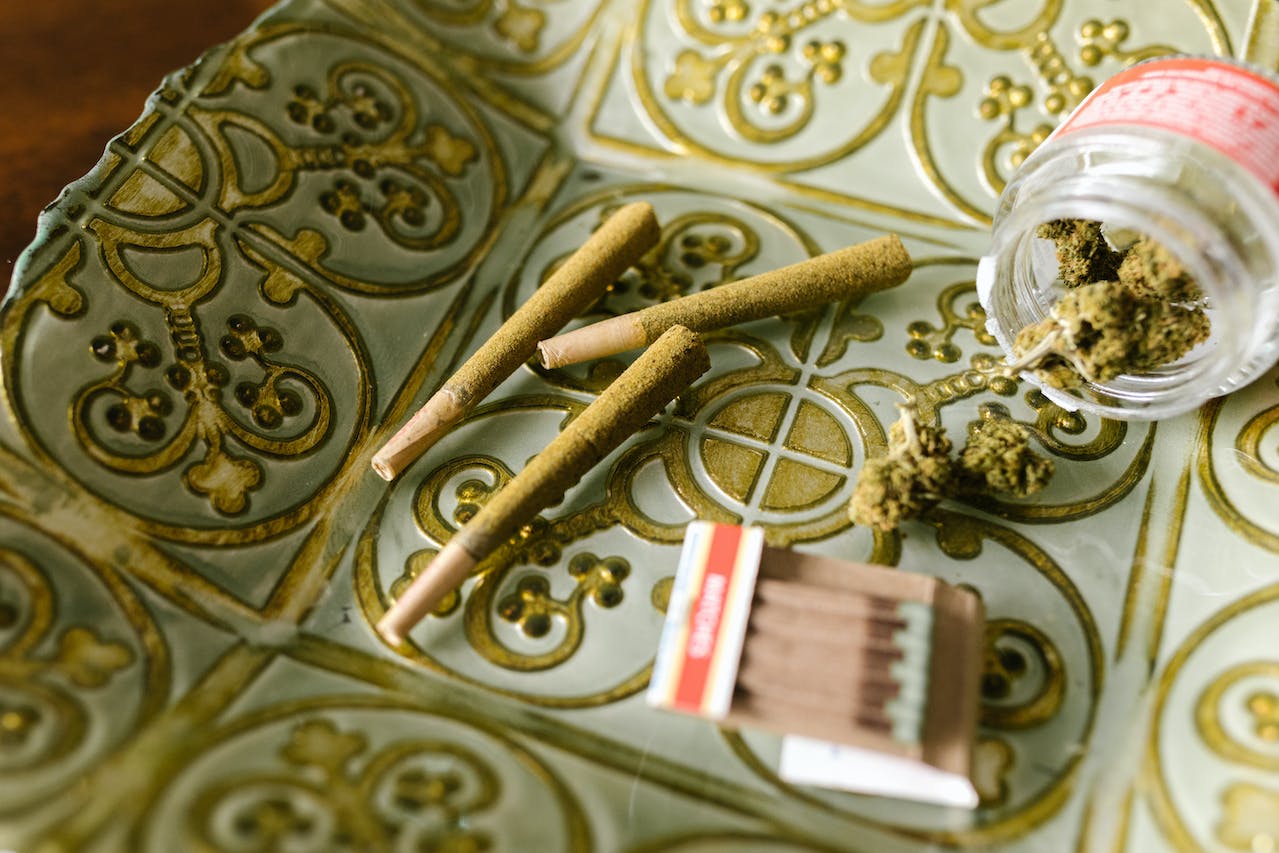What Are Hops And Weed And How Do They Differ?
Hops and weed, a juxtaposition that invites exploration into the diverse landscapes of flavors and effects. In the realm of brewing, hops, and weed take center stage, intertwining their unique characteristics to craft a symphony of tastes in ales and stouts.
Author:Suleman ShahReviewer:Han JuJan 19, 20241.5K Shares90.5K Views

In the vast realm of botanical wonders, two plants have captured the attention of enthusiasts and connoisseurs alike - hops and weed. While their names may evoke different associations, both plants share an intriguing botanical connection.
In this comprehensive exploration, we delve into the unique characteristics, historical significance, and contemporary applications of hops and weed. Beyond their recreational uses, these plants have found their places in various industries, shaping cultures and economies globally.
What Are Hops?
The female hop plant, formally known as Humulus lupulus, has green, cone-shaped blooms that are called hops. The alpha acids found in abundance in hops are the principal bittering ingredient used by brewers to counteract the sweetness that grain imparts to Beer.
The essential oilsthat give many beers their distinctive scents and tastes are concentrated in hops. Also, hops were a major player in the beer preservation game until the advent of modern refrigeration.
What Do Hops Do In Beer?
Beer is made scientifically using water, barley, hops, and yeast. The brew may have hundreds of flavors, colors, ABVs, and mouthfeels with just four components. The amounts of components, time spent on various procedures, temperature, the moment at which ingredients are added, grain and hops variety, water source, and yeast type all affect flavor.
The hops themselves are the main flavoring. Bitterness and flavor are their key impacts. The bitter flavor comes from soluble alpha and beta acids that form when they are cooked and combined with alcohol.
Even with this wide variety of permutations from four core components, herbs, spices, minerals, sugars, fruits, and other culinary additions may add flavor. It's why you can drink a different beer every day and always get a different taste.
What Is Weed?
A combination of the dried flowers of Cannabis sativa, marijuana is known by several slang words, including weed, herb, pot, grass, bud, ganja, Mary Jane, and a variety of others.
Tea and brownies, cookies, and candies are often made with marijuana, mainly when marketed or used medicinally. Marijuanais also vaporized more. Sinsemilla (from highly maintained female plants) and concentrated resins with large quantities of marijuana's active ingredients-honeylike hash oil, waxy budder, and hard amberlike shatter-are more potent. These resins are becoming more popular among recreational and medicinal users.
The psychoactive ingredient delta-9-tetrahydrocannabinol in marijuana causes most of the intoxication effects individuals want. The resin from female cannabis leaves and buds contains the chemical. The plant contains about 500 substances, including over 100 cannabinoids, which are chemically linked to THC.
How Do People Use Weed/ Marijuana?
Hand-rolled joints, pipes, and water pipes are used to smoke marijuana. In blunts, empty cigars are partially or fully refilled with marijuana. Some individuals use vaporizers to avoid smoking.
These machines remove THC and other active chemicals from marijuana and store their vapor. Inhale the mist, not the smoke. Several vaporizers employ liquid marijuana extract.
People may add marijuana to brownies, cookies, or chocolates or make tea. Smoking or swallowing THC-rich resins is becoming fashionable.
What Hops And Weed Have In Common?
Cannabis and hops, both part of the Cannabaceae family, share similarities beyond inducing hallucinations. In 2012, they were informally classified together due to visual parallels in their palmate lobed leaves.
Terpeneslike myrcene, beta-pinene, and alpha-humulene contribute to their similar smell and taste. While you can't get high from lighting up hops, vapingthem releases aromas reminiscent of a full-bodied, lemony, and mouthwatering experience, similar to beer.
Are Some Hops Weedier?
Specific hop cultivars are notoriously dank, with tastes and odors reminiscent of cannabis. In order to make more intoxicating beers, homebrewers often look for hops that taste more like marijuana. Here are a few of the most well-known weedy hops.
- Apollo- Evergreen, resinous, and tinged with earthy, herbal undertones. An elegant grapefruit accent.
- Columbus- Earthy, resinous, and finishing with a pleasant citrus and spice note.
- Chinook - Very fiery at first, then smooth and earthy with a piney, resinous undertone and a beautiful herbal aroma.
- Galaxy - This hop variety is popular in Australia and for a good reason: it's dank and tropical, with aromas of mango, peach, and passionfruit.
- Aromas - Aromas of earth, pine, citrus, and stone fruits characterize Simcoe. As dark as nightfall, it's pretty herbaceous.
The Relationship Between Hops And Weed
Hops, cannabis, and Celtis (a type of hackberries) belong to the Cannabaceae family. Cannabis has three subspecies: Sativa (tall with delicate leaves), Indica (short and bushy with broad leaves), and ruderalis (low THC, autonomous flowering). Hops have three primary subspecies: Humulus lupulus, Humulus japonicus, and Humulus yunnanensis. Both plants share similarities in appearance, with serrated and lobed leaves.
Wind pollinates them, and they produce both male and female plants. Active chemicals are in resinous glands (trichomes in cannabis, lupulin glands in hops). Traditionally and in termsof healthimpact, hops and marijuana are quite similar.
Can Hops And Weeds Be Crossbred?
The possibility of crossbreeding between weed (cannabis) and hops (Humulus lupulus) has been a topic of curiosity among enthusiasts and researchers due to their genetic similarities as members of the Cannabaceae family.
Both plants share certain botanical traits and characteristics, leading some to speculate about the potential for creating a hybrid between them. However, the practicality and success of such crossbreeding efforts are limited by several factors.
Genetic Barriers
While weeds and hops belong to the same plant family, they are different genera within the family. Cannabis belongs to the Cannabis genus, while hops belong to the Humulus genus. The genetic differences between these genera can create significant barriers to successful crossbreeding.
Chromosomal Differences
Even within the same plant family, variations in chromosome numbers and structures can hinder successful hybridization. Cannabis typically has a higher chromosome count than hops, which further complicates attempts at crossbreeding.
Divergent Evolutionary Paths
Over millions of years, cannabis and hops have followed separate evolutionary paths, adapting to different environmental conditions and developing distinct biochemical profiles. These adaptations may have led to differences in their reproductive strategies and mechanisms, making successful crossbreeding less likely.
Legal And Regulatory Constraints
In many regions, both cannabis and hops are subject to legal restrictions. The cultivation, possession, and breeding of cannabis are regulated due to its psychoactive properties, while hops are generally unrestricted. The legal landscape surrounding these plants can pose challenges for researchers or breeders attempting crossbreeding experiments.
Botanical Goals
The primary motivations for crossbreeding plants often include enhancing desirable traits or creating new varieties. Given the differences in the uses and characteristics of cannabis and hops, the practical benefits of crossbreeding may be limited. Cannabis is prized for its psychoactive and medicinal compounds, while hops are primarily valued for their use in brewing and aroma.
Uses Of Hops And Weed
In the vast realm of botanical wonders, few plants boast the versatility and impact that hops and weeds have on various industries and aspects of human life. From the brewing of beverages to medicinal applications, culinary innovations, and beyond, the dynamic duo of "hops and weed" is at the forefront of a multitude of uses, shaping cultures and economies worldwide.
Brewing Brilliance
Hops and weed are inseparable from the world of brewing, where hops play a pivotal role in shaping the character and flavor profile of Beer. The bittering agents in hops balance the sweetness of malt, while their aromatic compounds contribute unique scents and tastes.
Craft brewers, recognizing the diverse array of flavors these plants offer, are pushing the boundaries with innovative beer creations. From hop-forward IPAs to experimental cannabis-infused beers, the brewing industry continues to showcase the dynamic uses of "hops and weed."
Medicinal Marvels
Beyond the confines of the brewery, "weed" takes center stage in the realm of medicine. The therapeutic potential of cannabinoids found in cannabis has been the subject of extensive research.
From pain management to anxietyrelief, and even in treating certain medical conditions, "weed" has demonstrated its medicinal marvels. The varied uses of cannabis-derived medications and CBDproducts underscore the versatility and growing acceptance of "weed" in the realm of healthcare.
Culinary Explorations
In the culinary world, "hops and weed" are breaking new ground, infusing their distinct flavors into a wide array of dishes. Hops, with their bitter and aromatic qualities, find their way into sauces, marinades, and even desserts, adding a unique culinary dimension.
Simultaneously, chefs are experimenting with "weed" as an ingredient, incorporating cannabis-infused oils and extracts into gourmet creations. The culinary explorations of "hops and weed" are not just limited to Beer and brownies but extend to a diverse range of gastronomic delights.
Crafting Cultural Experiences
"Hops and weed" aren't merely ingredients; they're cultural symbols that bring communities together in events and festivals. Beer festivals celebrate the craft and artistry of brewing, showcasing the diverse uses of hops in the creation of unique beers.
Simultaneously, cannabis events create spaces for enthusiasts to explore the various uses of "weed," from wellness products to edibles and beyond.
These cultural experiences highlight how "hops and weed" transcend their botanical origins to become integral parts of social gatherings and celebrations.
Entrepreneurial Ventures
In the realm of entrepreneurship, "weed" is carving out new business horizons. Cannabis dispensaries, wellness products, and even cannabis-infused beverages represent the diverse commercial uses of "weed." Craft breweries, recognizing the potential synergy, experiment with cannabis-infused beers, pioneering a niche market that caters to enthusiasts seeking a hybrid experience.
The entrepreneurial ventures associated with "hops and weed" reflect not only economic opportunities but also a changing cultural landscape that embraces the diverse applications of these plants.
Destigmatizing Dialogues
Hops and weed are catalysts for conversations that challenge stereotypes and promote open dialogues. The uses of these plants extend beyond their recreational aspects, influencing discussions on sustainability, responsible consumption, and healthcare. Breweries engage in conversations about the sourcing of hops, highlighting their commitment to quality and sustainability.
In the cannabis industry, discussions around medicinal uses and policy reform contribute to destigmatizing "weed" and shaping a more informed and open-minded approach to its diverse applications.
Benefits Of Hops
With hops, brewers can create Beer with almost any taste they can imagine, whether it's a hint of tropical fruits, floral aromas, herbal undertones (like tea), or even just cutting grass. Following the development of India Pale Ale (IPA) reveals that craft brewers in the United States have taken great pleasure in testing the boundaries of hop use.
Hops aren't only for flavor; they also have natural preservation properties that beer makers use. In order to prevent spoilage during fermentation, the acids found in hop resin have a natural antibacterial effect. Even in the final product, hops continue to play the job of defender by preventing the emergence of bad tastes.
Hops have been an integral part of this field of study for generations. It was in the late 1700s that British brewers figured out how to really pump up the hops when sending Beer far abroad. Hops prolonged the life of Beer, which meant that ocean voyages weren't short.
Frequently Asked Questions
How Are Hops And Weeds Related?
Among the few members of the Cannabaceae family, you may find cannabis and humulus, more often known as hops. Terpenes are a common component in both cannabis and hops, making them relatives (see what we did there?).
Does Weed Smell Like Hops?
We wanted to know more about this, so we dug a little more. Well, it turns out that the recognizable aromas are from the shared oil composition of Humulus lupulus (hops) and Cannabis sativa (marijuana). Myrcene, beta-pinene, and alpha-humulene are three of the main aromatic components found in hops.
Is It Safe To Smoke Hops?
Hop blossoms contain lupulin, which makes them annoying and harsh to smoke directly. However, some people claim that smoking hops has a calming effect and may help them relax.
What Legal And Regulatory Challenges Might Be Associated With The Use Of Hops And Weed?
Both hops and weed can face legal and regulatory challenges. While hops are generally unregulated, weed, due to its psychoactive properties, is subject to legal restrictions in many regions. The legal landscape surrounding both plants can impact their cultivation, usage, and commercial applications.
How Do The Aromas Of Hops And Weed Differ In The Brewing And Cannabis Contexts?
The aromas of hops in brewing often feature floral elegance, earthiness, and spice. In contrast, weed exhibits a diverse range of aromas due to terpenes, offering scents from citrusy and fruity to musky and herbal. These aromas contribute to the unique olfactory experiences associated with each plant.
Considering All Of This
The journey through the realms of hops and weed unveils a tapestry woven with tradition, innovation, and interconnectedness. From the hop fields that grace the countryside to the carefully curated cannabis dispensaries, these plants have left an indelible mark on human historyand culture.
Whether it's the bitter bite of a craft beer or the nuanced experience of a cannabis-infused creation, hops and weed, continue to shape the sensory landscape of our lives. As we navigate the ever-evolving legal, social, and economic landscapes, the story of hops and weed serves as a testament to the resilience and adaptability of these botanical wonders.
In a world where tradition meets innovation and boundaries are continually pushed, the journey of hops and weed is far from over – it's a story still unfolding.

Suleman Shah
Author
Suleman Shah is a researcher and freelance writer. As a researcher, he has worked with MNS University of Agriculture, Multan (Pakistan) and Texas A & M University (USA). He regularly writes science articles and blogs for science news website immersse.com and open access publishers OA Publishing London and Scientific Times. He loves to keep himself updated on scientific developments and convert these developments into everyday language to update the readers about the developments in the scientific era. His primary research focus is Plant sciences, and he contributed to this field by publishing his research in scientific journals and presenting his work at many Conferences.
Shah graduated from the University of Agriculture Faisalabad (Pakistan) and started his professional carrier with Jaffer Agro Services and later with the Agriculture Department of the Government of Pakistan. His research interest compelled and attracted him to proceed with his carrier in Plant sciences research. So, he started his Ph.D. in Soil Science at MNS University of Agriculture Multan (Pakistan). Later, he started working as a visiting scholar with Texas A&M University (USA).
Shah’s experience with big Open Excess publishers like Springers, Frontiers, MDPI, etc., testified to his belief in Open Access as a barrier-removing mechanism between researchers and the readers of their research. Shah believes that Open Access is revolutionizing the publication process and benefitting research in all fields.

Han Ju
Reviewer
Hello! I'm Han Ju, the heart behind World Wide Journals. My life is a unique tapestry woven from the threads of news, spirituality, and science, enriched by melodies from my guitar. Raised amidst tales of the ancient and the arcane, I developed a keen eye for the stories that truly matter. Through my work, I seek to bridge the seen with the unseen, marrying the rigor of science with the depth of spirituality.
Each article at World Wide Journals is a piece of this ongoing quest, blending analysis with personal reflection. Whether exploring quantum frontiers or strumming chords under the stars, my aim is to inspire and provoke thought, inviting you into a world where every discovery is a note in the grand symphony of existence.
Welcome aboard this journey of insight and exploration, where curiosity leads and music guides.
Latest Articles
Popular Articles



